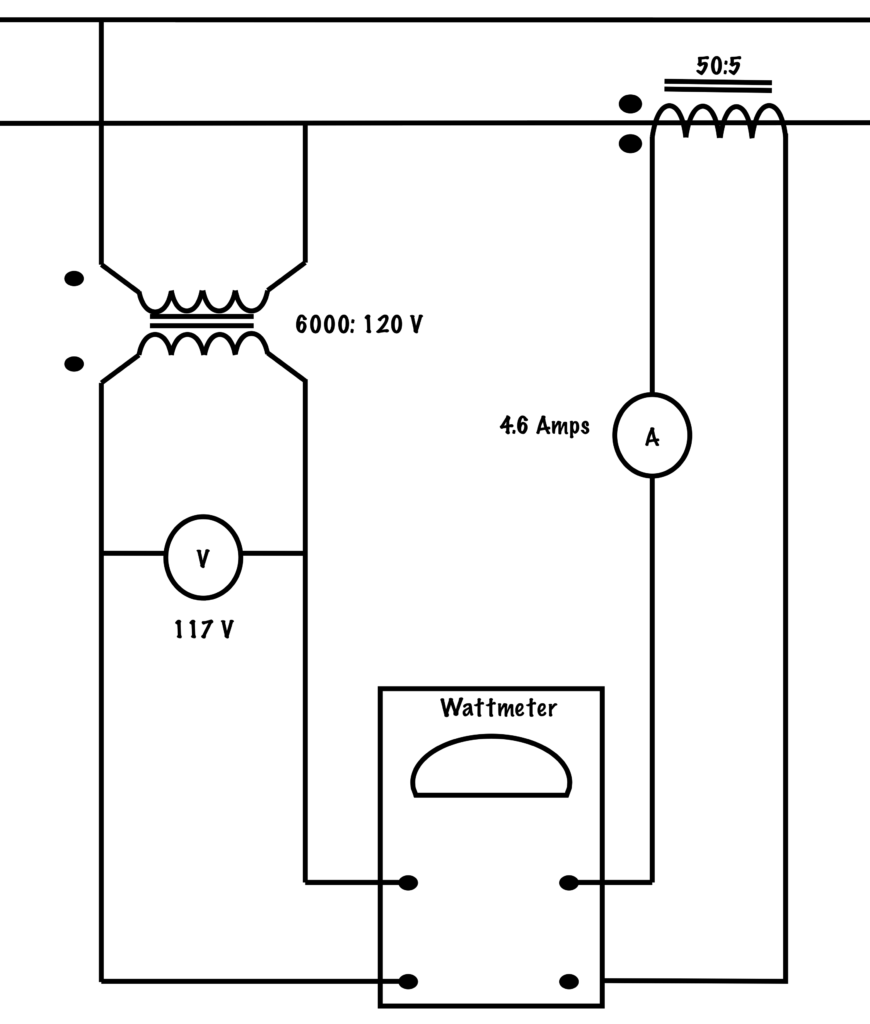Main Body
Instrument Transformers
Measuring and controlling circuits where very high currents or voltages are present cannot be done with standard multi-meters. The pressure on the meters would be too great and cause damage to both the meter and the person operating it. We use instrument transformers to step the values down to values that are safer to measure. Instrument transformers are designed to step down large voltages and currents at a fixed, known proportion.
The two most common types of instrument transformers are:
-
Current transformers (CTs)
-
Potential transformers (PTs)
Polarity of instrument transformers is commonly denoted with dots showing like polarity.
Current Transformers
A current transformer (CT) usually has its ratio fixed. For example, a CT has a ratio of 50:5. This is still a 10:1 transformer, but the ratio is given at something to 5.
It is dangerous to open the secondary of a CT. Since there is no load on the secondary of a CT, the current in the secondary is determined by the current on the primary. With the secondary open, there is no CEMF to hold back the primary core flux, and therefore the secondary must be short-circuited to prevent very large voltages from being a danger.
The core is driven to saturation very quickly.
As the max number of flux lines collapses 120 times per second, a very high voltage is induced on the secondary terminals. This can be VERY dangerous. Never work on a CT that has its secondary open as there can be a very high voltage present.
Potential Transformers
A potential transformer (PT) is usually constructed to have a secondary voltage of 120 V for standardization purposes. Much like a CT, a PT will have its ratio stated as something to 120 volts. For example, it may have a ratio of 12KV:120. This would mean the mathematical ratio is 100:1.
A PT acts in the same fashion as a step-down transformer.
Multiplier Ratio
The reading of a wattmeter connected to the secondary circuits of a PT and a CT would need to be multiplied by the ratio of both transformers.
For example: 50:1 x 20:1 = 1000
This is known as its multiplier.
Example

- If the voltmeter reads 117 volts, what is the primary voltage? (6000:120 = 50:1. 115 x 50 = 5750 V)
- If the ammeter reads 4.6 A, what is the primary current? (50:5 = 10:1 4.6 A x 10 = 46 A)
- What is the multiplier for the wattmeter? (50:1 x 10:1 = 500:1)
- What is the true power delivered to the load? (46 A x 5750 V = 264,500 watts)
- What is the reading of the wattmeter? (264,500/500 = 529 W)
Video Alert!
This video will walk through the concepts of instrument transformers and how to perform the calculations necessary.
Attributions
Instrument transformers video by The Electric Academy is under a Creative Commons Attribution License.

